
- •Functions
- •The Concept of a Function
- •Trigonometric Functions
- •Inverse Trigonometric Functions
- •Logarithmic, Exponential and Hyperbolic Functions
- •Limits and Continuity
- •Introductory Examples
- •Continuity Examples
- •Linear Function Approximations
- •Limits and Sequences
- •Properties of Continuous Functions
- •The Derivative
- •The Chain Rule
- •Higher Order Derivatives
- •Mathematical Applications
- •Antidifferentiation
- •Linear Second Order Homogeneous Differential Equations
- •Linear Non-Homogeneous Second Order Differential Equations
- •Area Approximation
- •Integration by Substitution
- •Integration by Parts
- •Logarithmic, Exponential and Hyperbolic Functions
- •The Riemann Integral
- •Volumes of Revolution
- •Arc Length and Surface Area
- •Techniques of Integration
- •Integration by formulae
- •Integration by Substitution
- •Integration by Parts
- •Trigonometric Integrals
- •Trigonometric Substitutions
- •Integration by Partial Fractions
- •Fractional Power Substitutions
- •Numerical Integration
- •Integrals over Unbounded Intervals
- •Discontinuities at End Points
- •Improper Integrals
- •Sequences
- •Monotone Sequences
- •Infinite Series
- •Series with Positive Terms
- •Alternating Series
- •Power Series
- •Taylor Polynomials and Series
- •Applications
- •Parabola
- •Ellipse
- •Hyperbola
- •Polar Coordinates
- •Graphs in Polar Coordinates
- •Areas in Polar Coordinates
- •Parametric Equations

3.2. THE CHAIN RULE
2
35. f(x) = x2
37.f(x) = x4 − 4x2
39.f(x) = (x + 2)(x − 4)
41.y = (x2 + 1) sin x
43.y = (x2 + 1)(x10 − 5)
45.y = (x1/2 + 4)(x1/3 − 5)
47.y = x5 sin x
49.y = x2 cot x − 2x + 5
51.y = (sec x + tan x)(sin x + cos x)
x2 + 1 53. y = x2 + 4
x1/2 + 1
55. y = 3x3/2 + 2
57. y = t2 + 3t + 2 t3 + 1
59. y = 3 + sin t cos t
4 + sec t tan t
111
4 |
3 |
2 |
|
|||
36. f(x) = |
|
− |
|
+ |
|
+ 1 |
x3 |
x2 |
x |
||||
38.f(x) = (x2 + 2)(x2 + 1)
40.f(x) = (x3 + 1)(x3 − 1)
42.y = x2 cos x
44.y = x2 tan x
46. y = (2x + sin x)(x2 + 4)
48. y = x4(2 sin x − 3 cos x) 50. y = (x + sin x)(4 + csc x)
52. y = x2(2 cot x − 3 csc x)
54. y = 1 + sin x
1 + cos x
56. y = sin x − cos x sin x + cos x
x2ex
58. y = 1 + ex
t2 sin t 60. y = 4 + t2
3.2The Chain Rule
Suppose we have two functions, u and y, related by the equations: u = g(x) and y = f(u).
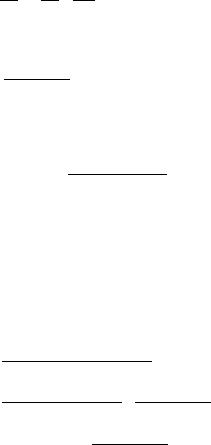
112 CHAPTER 3. DIFFERENTIATION
Then y = (f ◦ g)(x) = f(g(x)).
The chain rule deals with the derivative of the composition and may be stated as the following theorem:
Theorem 3.2.1 (The Chain Rule). Suppose that g is defined in an open interval I containing c, and f is defined in an open interval J containing g(c), such that g(x) is in J for all x in I. If g is di erentiable at c, and f is di erentiable at g(c), then the composition (f ◦ g) is di erentiable at c and
(f ◦ g)0(c) = f0(g(c)) · g0(c).
In general, if u = g(x) and y = f(u), then dxdy = dudy · dxdu.
Proof. Let F be defined on J such that
(
f(u)−f(g(c))
F (u) = u−g(c)
since f is di erentiable at g(c),
lim F (u) = lim
=f0(g(c))
=F (g(c)).
Therefore, F is continuous at g(c). By the definition of F ,
f(u) − f(g(c)) = F (u)(u − g(c))
for all u in J. For each x in I, we let y = g(x) on I. Then
(f |
◦ |
g)0(c) = lim |
(f ◦ g)(x) − (f ◦ g)(c) |
|
|
|
|||||||||||||
|
x |
→ |
c |
|
|
|
x |
− |
c |
|
|
|
|
|
|
||||
|
|
|
|
|
|
|
|
|
|
|
|
|
|
|
|
|
|||
|
|
= lim |
f(g(x)) − f(g(c)) |
· |
g(x) − g(c) |
||||||||||||||
|
|
x |
→ |
c |
g(x) |
− |
g(c) |
|
|
x |
− |
c |
|||||||
|
|
|
|
|
|
|
|
|
g(x) − g(c) |
|
|||||||||
|
|
= |
lim |
F (u) |
· |
lim |
|
|
|
||||||||||
|
|
u |
→ |
g(c) |
x |
→ |
c |
|
x |
− |
c |
|
|
|
|||||
|
|
|
|
|
|
|
|
|
|
|
|
|
|
|
|||||
= f0(g(c)) · g0(c).

3.2. THE CHAIN RULE |
113 |
It follows that f ◦g is di erentiable at c. The general result follows by replacing c by the independent variable x. This completes the proof of Theorem 3.2.1.
Example 3.2.1 Let y = u2 + 1 and u = x3 + 4. Then
dudy = 2u and dudx = 3x2.
Therefore,
dxdy = dudy · dudx
=2u · 3x2
=6x2(x3 + 4) .
Using the composition notation, we get
y = (x3 + 4)2 + 1 = x6 + 8x3 + 17
and
dxdy = 6x5 + 24x2
= 6x2(x3 + 4) .
Using
(f ◦ g)0(x) = f0(g(x)) · g0(x),
we see that
(f ◦ g)(x) = (x3 + 4)2 + 1
and
(f ◦ g)0(x) = f0(g(x)) · g0(x)
=2(x3 + 4)1 · (3x2)
=6x2(x3 + 4) .

114 |
CHAPTER 3. DIFFERENTIATION |
Example 3.2.2 Suppose that y = sin(x2 + 3).
We let u = x2 + 3, and y = sin u. Then
dxdy = dudy · dudx
=(cos u)(2x)
=(cos(x2 + 3)) · (2x).
Example 3.2.3 Suppose that y = w2, w = sin u + 3, and u = (4x + 1). Then
dxdy = dwdy · dwdu · dudx
=(2w) · (cos u) · 4
=8w cos u
=8[sin(4x + 1) + 3] · cos(4x + 1) · 4
=8(sin(4x + 1) + 3) · cos(4x + 1).
If we express y in terms of x explicitly, then we get
y = (sin(4x + 1) + 3)2
and
dxdy = 2(sin(4x + 1) + 3)1 · ((cos(4x + 1)) · 4 + 0) = 8(sin(4x + 1) + 3) cos(4x + 1).
Example 3.2.4 Suppose that y = (cos(3x + 1))5. Then
dxdy = 5(cos(3x + 1))4 · (− sin(3x + 1)) · 3 = −15(cos(3x + 1))4 sin(3x + 1).
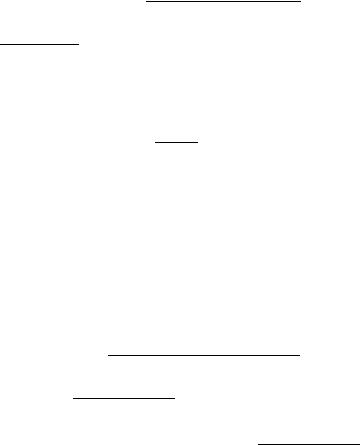
3.2. THE CHAIN RULE |
|
|
|
|
|
|
115 |
||||||||||||
Example 3.2.5 Suppose that y = tan3(2x2 + 1). Then |
|
||||||||||||||||||
|
|
|
|
dy |
= 3(tan2(2x2 + 1)) · (sec2(2x2 + 1)) · 4x |
|
|||||||||||||
|
|
|
|
|
|
|
|
||||||||||||
|
|
|
|
dx |
|
||||||||||||||
|
|
|
|
|
|
|
= 12x · tan2(2x2 + 1) · sec2(2x2 + 1). |
|
|||||||||||
|
|
|
|
|
|
|
|
|
|
|
|
|
|
|
x + 1 |
|
|||
Example 3.2.6 Suppose that y = cot |
|
|
. Then |
|
|||||||||||||||
x2 + 1 |
|
||||||||||||||||||
|
dy |
|
= |
|
|
|
csc2 |
|
x + 1 |
|
|
(x2 |
+ 1) 1 − (x + 1)2x |
|
|||||
|
dx |
|
|
x2 + 1 |
|
(x2 ·+ 1) · 2x |
|
||||||||||||
|
|
− |
|
|
|||||||||||||||
|
|
|
= |
x2 + 2x − 1 |
csc2 |
|
x + 1 |
. |
|
||||||||||
|
|
|
|
|
|
|
|
|
|
|
|
||||||||
|
|
|
|
|
|
|
(x2 + 1)2 |
x2 + 1 |
|
||||||||||
x2 + 1 3
Example 3.2.7 Suppose that y = sec x4 + 2 .
Since the function y has a composition of several functions, let us define some intermediate functions. Let
|
|
|
|
|
|
|
|
y = sec w, w = u3 |
, |
and |
|
u = |
x2 |
+ 1 |
. |
|
|
||||||||||||||
|
|
|
|
|
|
|
|
|
x4 |
+ 2 |
|
|
|||||||||||||||||||
|
|
|
|
|
|
|
|
|
|
|
|
|
|
|
|
|
|
|
|
|
|
|
|
|
|
|
|
||||
Then |
|
|
|
|
|
|
|
|
|
|
|
|
|
|
|
|
|
|
|
|
|
|
|
|
|
|
|
|
|
||
|
dy |
|
dy |
|
dw |
|
du |
|
|
|
|
|
|
|
|
|
|
|
|
|
|
|
|
|
|
||||||
|
|
|
= |
|
· |
|
· |
|
|
|
|
|
|
|
|
|
|
|
|
|
|
|
|
|
|
|
|
|
|
||
|
dx |
dw |
du |
|
dx |
|
|
|
|
|
|
|
|
|
|
|
|
|
|
|
|
|
|
||||||||
|
|
|
= [sec(w) tan(w)] |
· |
[3u2] |
· |
(x4 |
+ 2) · 2x − (x2 + 1) · 4x3 |
|
|
|||||||||||||||||||||
|
|
|
|
|
|||||||||||||||||||||||||||
|
|
|
|
|
|
|
|
|
|
|
|
|
|
|
|
|
|
|
|
(x4 + 2)2 |
|
|
|
|
|
||||||
|
|
|
= 3u2(sec w tan w) |
· |
4x − 4x3 − 2x5 |
|
|
|
|
|
|
|
|
|
|||||||||||||||||
|
|
|
|
|
|
|
|
|
|
|
|
|
|
|
|
(x4 + 2)2 |
|
|
|
|
|
|
|
|
|
||||||
|
|
|
= 3 |
|
x2 + 1 |
2 sec |
|
x2 + 1 |
3 |
tan |
|
x2 + 1 |
|
3 |
4x − 4x3 − 2x5 |
. |
|||||||||||||||
|
|
|
|
|
|
|
|
|
|
|
|
|
|
|
|
|
|
|
· |
|
|||||||||||
|
|
|
|
x4 + 2 |
|
|
|
x4 + 2 |
|
x4 + 2 |
(x4 + 2)5 |
||||||||||||||||||||

116 |
|
|
CHAPTER 3. DIFFERENTIATION |
Example 3.2.8 Suppose that y = csc(2x + 5)4. Then |
|||
|
dy |
= [− csc(2x + 5)4 cot(2x + 5)4] · 4(2x + 5)3 · 2 |
|
|
|
|
|
|
dx |
||
= −8(2x + 5)3 csc(2x + 5)4 cot(2x + 5)4.
Exercises 3.2 Evaluate dxdy for each of the following:
1.y = (2x − 5)10
3.y = sin(3x + 5)
5.y = tan5(3x + 1)
7.y = cot4(2x − 4)
9.y = 3x + 1 5 x2 + 2
2. y =
x2 + 2 3
x5 + 4
4. y = cos(x3 + 1)
6. y = sec2(x2 + 1)
8. y = csc3(3x2 + 2)
10. y =
x2 + 1 4
x3 + 2
11.y = sin(w), w = u3, u = (2x − 1)
12.y = cos(w), w = u2 + 1, u = (3x + 5)
13. |
y = tan(w), w = v2, v = u3 + 1, u = x |
|||
|
1 |
|
|
|
14. |
y = sec w, w = v3, v = 2u2 − 1, u = |
x |
||
|
|
|||
x2 + 1 |
||||
15. |
y = csc w, w = 3v + 2, v = (u + 1)3, u = (x2 + 3)2 |
|||
In exercises 16–30, compute the derivative of the given function.
16. y = |
x3 |
+ 1 |
|
3 |
|
|
17. y = (x2 − 1)10 |
||
x2 |
+ 4 |

3.2. |
THE CHAIN RULE |
|
117 |
18. |
y = (x2 + x + 2)100 |
19. |
y = (2 sin t − 3 cos t)3 |
20. |
y = (x2/3 + x4/3)2 |
21. |
y = (x1/2 + 1)50 |
22. |
y = sin(3x + 2) |
23. |
y = cos(3x2 + 1) |
24. |
y = sin(2x) cos(3x) |
25. |
y = sec 2x + tan 3x |
26. |
y = sec 2x tan 3x |
27. |
y = (x2 + 1)2 sin 2x |
28. |
y = x sin(1/x2) |
29. |
y = sin2(3x) + sec2(5x) |
30. |
y = cot(x2) + csc(3x) |
|
|
|
|
|
|
|
|
|
|
|
|
|
|
|||||||||
In exercises 31–60, assume that |
|
|
|
|
|
|
|
|
|
|
||||||||||||||
(a) |
d |
(ex) = ex |
(b) |
|
d |
(e−x) = −e−x |
(c) |
d |
(ln x) = |
|||||||||||||||
|
|
|
|
|
|
|
|
|
||||||||||||||||
dx |
|
dx |
dx |
|||||||||||||||||||||
|
d |
(bx) = bx ln b |
|
|
d |
|
1 |
|
for b > 0 and b 6= 1. |
|||||||||||||||
(d) |
|
|
(e) |
|
|
(logb x) = |
|
|
||||||||||||||||
dx |
dx |
x ln b |
||||||||||||||||||||||
Compute the derivative of the given function. |
|
|
|
|
|
|
||||||||||||||||||
31. |
y = sinh x |
|
|
|
|
|
|
|
|
32. |
y = cosh x |
|
|
|
|
|||||||||
33. |
y = tanh x |
|
|
|
|
|
|
|
|
34. |
y = coth x |
|
|
|
|
|||||||||
35. |
y = sech x |
|
|
|
|
|
|
|
|
36. |
y = csch x |
|
|
|
|
|||||||||
37. |
y = ln(1 + x) |
|
|
|
|
|
38. |
y = ln(1 − x) |
|
|
|
|
||||||||||||
|
|
1 |
|
1 − x |
|
|
|
|
|
|
|
|
x + √ |
|
|
|
||||||||
39. |
y = |
ln |
|
|
|
|
|
|
40. |
y = ln |
x2 + 1 |
|
||||||||||||
|
1 + x |
|
|
|
|
|
|
|||||||||||||||||
|
|
|
2 |
|
|
|
|
|
|
|
|
|
|
|
|
|
||||||||
|
|
x + √ |
|
|
|
|
|
|
|
y = xe−x2 |
|
|
|
|
||||||||||
41. |
y = ln |
x2 − 1 |
|
|
|
|
42. |
|
|
|
|
|||||||||||||
1
x
43. y = esin 3x |
44. y = e2x sin 4x |
118
45.y = ex2 (2 sin 3x − 4 cos 5x)
47.y = 4x2
49.y = 10sin 2x
51.y = log10(x2 + 10)
53.y = ln(sin(e2x))
55. |
y = ln(cos x + 2) |
|
|
|
|
y = ln |
x4 + 3 |
|
3 |
57. |
|
|||
x2 + 10 |
|
|||
59. |
y = ln(sec 2x + tan 2x) |
|||
CHAPTER 3. DIFFERENTIATION
46.y = xe−x2 + 4e−x
48.y = 10(x2+4)
50.y = 3cos 3x
52.y = log3(x2 sin x + x)
54.y = ln(1 + e−x)
56.y = ln(ln(x2 + 4))
58.y = (1 + sin2 x)3/2
60.y = ln(csc 3x − cot 3x)
3.3Di erentiation of Inverse Functions
One of the applications of the chain rule is to compute the derivatives of inverse functions. We state the exact result as the following theorem:
Theorem 3.3.1 Suppose that a function f has an inverse, f−1, on an open interval I. If u = f−1(x), then
(i) |
du |
= |
1 |
|
|
|
|
|
|
|
|
|
dx |
|
|
|
|
|
|||
|
|
dx |
|
du |
1 |
|
|
1 |
|
|
(ii) |
(f−1)0(x) = |
|
= |
|
|
|||||
f0(f−1(x)) |
f0(u) |
|||||||||
Proof. |
By comparison, x = f(f−1(x)) = x. Hence, by the chain rule |
|||||||||
|
|
|
|
|
|
1 = |
dx |
= f0(f−1(x)) · (f−1)0(x) |
||
|
|
|
|
|
|
|
|
|||
|
|
|
|
|
|
dx |
||||
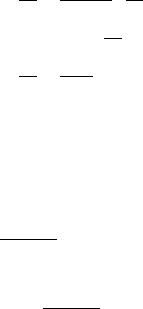
3.3. DIFFERENTIATION OF INVERSE FUNCTIONS |
119 |
|||||
and |
|
1 |
|
|
||
(f−1)0(x) = |
|
. |
|
|||
|
|
|||||
f0(f−1(x)) |
|
|||||
In the u = f−1(x) notation, we have |
|
|
|
|
||
|
du |
= |
1 |
. |
|
|
|
|
dx |
|
|
||
|
dx |
du |
|
|
|
|
Remark 11 In Examples 76–81, we assume that the inverse trigonometric functions are di erentiable.
Example 3.3.1 Let u = arcsin x, −1 |
≤ x ≤ 1, and − |
π |
≤ u ≤ |
π |
. Then |
|
|
||||
2 |
2 |
||||
x = sin u and by the chain rule, we get |
|
|
|
|
|
1 = dx = d(sin u) · du dx du dx
= cos u · dudx dudx = cos1 u.
Therefore, |
|
|
|
|
|
|
|
|
|
|
|
|
|
|
|
|
|
||
|
d |
|
|
|
1 |
, − |
π |
|
|
π |
|
||||||||
|
|
|
(arcsin x) = |
|
|
|
|
|
< u < |
|
, |
||||||||
|
dx |
cos u |
2 |
|
2 |
||||||||||||||
|
|
|
|
|
|
1 |
|
|
|
|
|
|
|
|
|||||
|
|
|
|
|
|
= |
|
|
|
|
|
|
|
|
|
(Why?) |
|||
|
|
|
|
|
|
p |
|
|
|
|
|
|
|
||||||
|
|
|
|
|
|
11− sin2 u |
|
|
|
||||||||||
|
|
|
|
|
|
= |
√ |
|
|
|
, −1 < x < 1. (Why?) |
||||||||
|
|
|
|
|
|
1 − x2 |
|||||||||||||
Thus, |
|
d |
|
|
|
|
|
|
|
|
1 |
|
|
|
|
||||
|
|
|
|
(arcsin x) = |
√ |
|
|
, −1 |
< x < 1. |
||||||||||
|
|
|
|
|
|
|
|
||||||||||||
|
|
|
|
dx |
|
||||||||||||||
|
|
|
|
1 |
− x2 |
||||||||||||||
We note that x = ±1 are excluded.
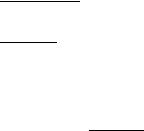
120 CHAPTER 3. DIFFERENTIATION
Example 3.3.2 Let u = arccos x, −1 ≤ x ≤ 1, and 0 ≤ u ≤ π. Then x = cos u and
1 = |
|
dx |
= − sin u |
|
du |
|
|
|
|
|
|
|
|
|
|
|
|
|
|
|
|
|
|
|
|
|
|
|
|
|
|
|
|||||||||||||
|
|
|
|
|
|
|
|
|
|
|
|
|
|
|
|
|
|
|
|
|
|
|
|
|
|
|
|
|
|
|
|
|
|||||||||||||
dx |
|
dx |
|
|
|
|
|
|
|
|
|
|
|
|
|
|
|
|
|
|
|
|
|
|
|
|
|
|
|
||||||||||||||||
|
du |
1 |
|
|
|
|
|
|
|
|
|
|
|
|
|
|
|
|
|
|
|
|
|
|
|
|
|
|
|
|
|
|
|
|
|
|
|
||||||||
|
|
|
= − |
|
|
|
|
|
|
, 0 < u < π |
|
|
|
|
|
|
|
|
|
|
|
|
|
|
|
|
|
||||||||||||||||||
|
|
dx |
sin u |
|
|
|
|
|
|
|
|
|
|
|
|
|
|
|
|
|
|||||||||||||||||||||||||
|
|
|
= −√ |
|
|
|
|
1 |
|
|
, 0 < u < π |
|
|
|
|
|
|
|
|
|
(Why?) |
|
|
||||||||||||||||||||||
|
|
|
|
|
|
|
|
|
|
|
|
|
|
|
|
|
|
||||||||||||||||||||||||||||
|
|
|
1 − cos2 u |
|
|
|
|
|
|
|
|
|
|
|
|||||||||||||||||||||||||||||||
|
|
|
1 |
|
|
|
|
|
|
|
|
|
|
|
|
|
|
|
|
|
|
|
|
|
|
|
|
|
|
|
|
|
|
|
|
||||||||||
|
|
|
= −√ |
|
|
|
, −1 < x < 1. |
|
|
|
|
|
|
|
|
|
|
(Why?) |
|
|
|||||||||||||||||||||||||
|
|
|
1 − x2 |
|
|
|
|
|
|
|
|
|
|
|
|
||||||||||||||||||||||||||||||
We note again that x = ±1 are excluded. |
|
|
|
|
|
|
|
|
|
|
|
|
|
|
|
|
|
||||||||||||||||||||||||||||
Thus, |
|
|
d |
|
|
|
|
|
|
|
|
|
|
|
|
|
|
|
|
−1 |
|
|
|
|
|
|
|
|
|
|
|
|
|
|
|
|
|
||||||||
|
|
|
|
|
(arccos x) = |
|
|
|
|
|
, |
|
|
|
1 < x < 1. |
|
|
|
|
||||||||||||||||||||||||||
|
|
|
|
|
|
|
|
|
|
|
|
|
|
|
|
|
|
|
|
|
|
|
|
|
|||||||||||||||||||||
|
|
|
|
|
dx |
|
|
|
|
|
√1 − x2 |
|
|
− |
|
|
|
|
|
|
|
|
|
|
|
||||||||||||||||||||
Example 3.3.3 Let u = arctan x, −∞ < x < ∞, and − |
π |
π |
|
||||||||||||||||||||||||||||||||||||||||||
|
< u < |
|
. Then, |
||||||||||||||||||||||||||||||||||||||||||
2 |
2 |
||||||||||||||||||||||||||||||||||||||||||||
|
|
|
|
|
|
|
|
|
|
x = tan u, − |
π |
|
|
|
|
|
|
|
π |
|
|
|
|
|
|
||||||||||||||||||||
|
|
|
|
|
|
|
|
|
|
|
|
|
< u < |
|
|
|
|
|
|
|
|
|
|
|
|||||||||||||||||||||
|
|
|
|
|
|
|
|
|
|
2 |
|
|
2 |
|
|
|
|
|
|
|
|
|
|||||||||||||||||||||||
|
|
|
|
|
|
|
|
dx |
= (sec2 u), |
|
du |
|
|
− |
|
π |
|
|
|
|
π |
|
|
|
|
||||||||||||||||||||
|
|
|
|
|
1 = |
|
|
|
|
|
|
|
|
, |
|
|
|
< u < |
|
|
|
|
|
|
|||||||||||||||||||||
|
|
|
|
|
dx |
|
|
dx |
2 |
2 |
|
|
|
|
|
||||||||||||||||||||||||||||||
|
|
|
|
|
|
|
|
|
du |
= |
1 |
|
|
|
|
|
|
|
|
|
|
|
|
|
|
|
|
|
|
|
|
|
|
|
|
|
|
|
|
||||||
|
|
|
|
|
|
|
|
|
|
|
|
|
|
|
|
|
|
|
|
|
|
|
|
|
|
|
|
|
|
|
|
|
|
|
|
|
|
||||||||
|
|
|
|
|
|
|
|
|
dx |
sec2 u |
|
|
|
|
|
|
|
|
|
|
|
|
|
|
|
|
|
|
|
|
|
|
|
||||||||||||
|
|
|
|
|
|
|
|
|
|
|
|
|
|
= |
1 |
|
|
|
|
|
|
|
, |
|
− |
|
π |
|
< u < |
π |
|
|
|
|
|
|
|||||||||
|
|
|
|
|
|
|
|
|
|
|
|
|
|
|
|
|
|
|
|
|
|
|
|
|
|
|
|
|
|||||||||||||||||
|
|
|
|
|
|
|
|
|
|
|
|
|
|
1 + tan2 u |
2 |
|
2 |
|
|
|
|
|
|
||||||||||||||||||||||
|
|
|
|
|
|
|
|
|
|
|
|
|
|
= |
1 |
|
|
|
, |
−∞ < x < ∞ |
|
|
|
|
|
|
|||||||||||||||||||
|
|
|
|
|
|
|
|
|
|
|
|
|
|
|
|
|
|
|
|
|
|
||||||||||||||||||||||||
|
|
|
|
|
|
|
|
|
|
|
|
|
|
1 + x2 |
|
|
|
|
|
|
|||||||||||||||||||||||||
Therefore, |
|
|
d |
|
|
|
|
|
|
|
|
|
1 |
|
|
|
|
|
|
|
|
|
|
|
|
|
|
|
|
|
|
|
|
||||||||||||
|
|
|
|
|
|
|
|
|
|
|
|
|
|
|
|
|
, −∞ < x < ∞. |
|
|
||||||||||||||||||||||||||
|
|
|
|
|
(arctan x) = |
|
|
|
|
||||||||||||||||||||||||||||||||||||
|
|
|
|
dx |
1 + x2 |
|
|
||||||||||||||||||||||||||||||||||||||

3.3. DIFFERENTIATION OF INVERSE FUNCTIONS |
121 |
Example 3.3.4 Let u = arcsec x, x (−∞, −1] [1, ∞) and
uh0, π2 π2 , πi. Then, x = sec u
|
|
|
|
dx |
|
|
|
|
|
|
|
|
|
|
|
du |
|
|
|
|
|
|
|
|
|
|
|
|
|
π |
|
|
π |
|
|
|
|
|
||||||||||||||||
|
1 = |
|
|
|
|
|
|
|
|
|
= sec u tan u · |
|
|
, |
|
|
|
|
|
|
|
u h0, |
|
|
|
|
|
|
|
|
, πi |
|
||||||||||||||||||||||
|
dx |
|
|
|
|
dx |
|
|
|
|
|
2 |
2 |
|
||||||||||||||||||||||||||||||||||||||||
|
|
|
|
du |
|
= |
1 |
|
|
|
, |
|
|
|
|
|
u |
|
|
0, |
π |
|
|
|
|
|
|
|
π |
, π |
|
|
|
|
|
|||||||||||||||||||
|
|
|
|
dx |
sec u tan1 |
|
|
|
|
|
|
|
2 |
|
|
|
|
|
|
|
|
|
|
|
||||||||||||||||||||||||||||||
|
|
|
|
|
|
|
|
|
|
|
|
|
|
|
2 |
|
|
|
|
|
|
|||||||||||||||||||||||||||||||||
|
|
|
|
|
|
|
|
|
|
|
|
|
|
|
|
|
|
|
u |
|
|
|
|
|
|
|
|
|
|
|
|
|
|
|
|
|
|
|
|
|
|
|
|
|
|
|
|
|
|
|
|
|
||
|
|
|
|
|
|
|
|
|
|
|
|
= |
| sec u|√ |
|
|
|
|
|
|
|
|
|
|
|
|
|
(Why the absolute value?) |
|||||||||||||||||||||||||||
|
|
|
|
|
|
|
|
|
|
|
|
sec2 u − 1 |
|
|
||||||||||||||||||||||||||||||||||||||||
|
|
|
|
|
|
|
|
|
|
|
|
|
1 |
|
|
|
|
|
|
|
|
|
|
|
|
|
|
|
|
|
|
|
|
|
|
|
|
|
|
|
|
|
|
|
|
|
|
|
|
|||||
|
|
|
|
|
|
|
|
|
|
|
|
= |
|x|√ |
|
|
|
, |
|
|
|
|
|
x |
(−∞, −1) (1, ∞). |
|
|||||||||||||||||||||||||||||
|
|
|
|
|
|
|
|
|
|
|
|
x2 − 1 |
|
|
|
|
|
|
||||||||||||||||||||||||||||||||||||
Thus, |
|
|
|
|
d |
|
|
|
|
|
|
|
|
|
|
1 |
|
|
|
|
|
|
|
|
|
|
|
|
|
|
|
|
|
|
|
|
|
|
|
|
|
|
|
|||||||||||
|
|
|
|
|
|
|
|
|
|
|
|
|
|
|
|
|
|
|
|
|
|
|
|
|
|
|
|
|
|
|
|
|
|
|
|
|
|
|
|
|
|
|||||||||||||
|
|
|
|
|
(arcsec x) = |
|x|√ |
|
|
|
|
|
|
, x (−∞, −1) (1, ∞). |
|||||||||||||||||||||||||||||||||||||||||
|
|
|
dx |
|||||||||||||||||||||||||||||||||||||||||||||||||||
|
|
|
x2 − 1 |
|||||||||||||||||||||||||||||||||||||||||||||||||||
Example 3.3.5 Let u = arccsc x, |
|
x (−∞, −1] [1, ∞), and |
||||||||||||||||||||||||||||||||||||||||||||||||||||
|
π |
|
|
π |
|
|
|
|
|
|
|
|
|
|
|
|
|
|
|
|
|
|
|
|
|
|
|
|
|
|
|
|
|
|
|
|
|
|||||||||||||||||
u h− |
|
, 0 0, |
|
|
|
i. Then, |
|
|
|
|
|
|
|
|
|
|
|
|
|
|
|
|
|
|
|
|
|
|
|
|
|
|
|
|
|
|
|
|
|
|||||||||||||||
2 |
2 |
|
|
|
|
|
|
|
|
|
|
|
|
|
|
|
|
|
|
|
|
|
|
|
|
|
|
|
|
|
|
|
|
|
||||||||||||||||||||
|
|
|
|
|
|
|
|
|
|
|
|
|
|
|
|
|
|
|
|
|
|
|
|
|
|
|
|
|
π |
|
|
|
|
|
|
|
|
|
π |
|
|
|
|
|
|
|
|
|||||||
|
|
|
|
|
|
|
x = csc u , u h− |
|
|
, 0 0, |
|
|
|
i |
|
|
|
|
|
|
|
|
||||||||||||||||||||||||||||||||
|
|
|
|
|
|
|
2 |
2 |
|
|
|
|
|
|
|
|
||||||||||||||||||||||||||||||||||||||
|
|
|
|
|
|
dx |
|
|
|
|
|
|
|
|
|
|
|
|
|
|
|
du |
|
|
|
|
|
|
|
|
π |
|
|
|
|
π |
|
|||||||||||||||||
|
|
1 = |
|
|
|
= |
|
− csc u cot u · |
|
, |
|
|
|
u h− |
|
, 0 |
0, |
|
i |
|
||||||||||||||||||||||||||||||||||
|
|
dx |
|
dx |
|
|
2 |
2 |
|
|||||||||||||||||||||||||||||||||||||||||||||
|
|
|
|
|
|
dx |
|
|
csc u cot u |
|
|
|
|
|
|
|
−2 |
|
|
2 |
|
|
|
|
|
|
||||||||||||||||||||||||||||
|
|
|
|
|
|
du |
= |
|
|
|
−1 |
, u |
|
|
|
|
|
|
|
π |
, 0 |
0, |
π |
|
, |
|
(Why?) |
|||||||||||||||||||||||||||
|
|
|
|
|
|
|
1 |
|
|
|
|
|
|
|
|
|
|
|
||||||||||||||||||||||||||||||||||||
|
|
|
|
|
|
|
|
|
|
|
|
|
|
|
|
|
|
|
|
|
|
|
|
|
|
|
|
|
|
|
|
|
|
|
|
|
|
|
|
|
|
|
|
|
|
|||||||||
|
|
|
|
|
|
|
|
|
|
|
|
= |
|
|
| csc u|√ |
|
|
|
|
|
|
|
|
|
|
|
|
|
|
|
|
|
|
|
|
|
|
|
|
(Why?) |
||||||||||||||
|
|
|
|
|
|
|
|
|
|
|
|
|
|
csc2 u − 1 |
|
|
|
|
|
|
|
|
|
|
|
|
|
|
|
|
|
|
|
|
||||||||||||||||||||
|
|
|
|
|
|
|
|
|
|
|
|
|
1 |
|
|
|
|
|
|
|
|
|
|
|
|
|
|
|
|
|
|
|
|
|
|
|
|
|
|
|
|
|
|
|
|
|
|
|
|
|||||
|
|
|
|
|
|
|
|
|
|
|
|
= |
|
|
|x|√ |
|
|
, x |
|
(−∞, −1) (1, ∞). |
|
|
|
|||||||||||||||||||||||||||||||
|
|
|
|
|
|
|
|
|
|
|
|
|
|
x2 − 1 |
|
|
|
|
||||||||||||||||||||||||||||||||||||
Note that x = ±1 are excluded. |
|
|
|
|
|
|
|
|
|
|
|
|
|
|
|
|
|
|
|
|
|
|
|
|
|
|
||||||||||||||||||||||||||||
Thus, |
|
|
|
|
|
|
|
|
|
|
|
|
|
|
|
|
|
|
|
|
|
|
|
|
|
|
|
|
|
|
|
|
|
|
|
|
|
|
|
|
|
|
|
|||||||||||
|
|
|
|
|
|
dx |
|
|
|
|
|
|
|
|
|
|
x√x2 |
|
− 1 |
−∞ |
|
|
|
∞ |
|
|||||||||||||||||||||||||||||
|
|
|
|
|
|
d |
(arccsc x) = |
|
|
|
|
−1 |
|
|
|
|
, x |
( |
, 1] |
|
|
(1, |
|
|
). |
|||||||||||||||||||||||||||||
|
|
|
|
|
|
|
|
|
|
|
|
|
|
|
|
|
|
|
|
|
|
|
|
|
|
|
|
|
||||||||||||||||||||||||||
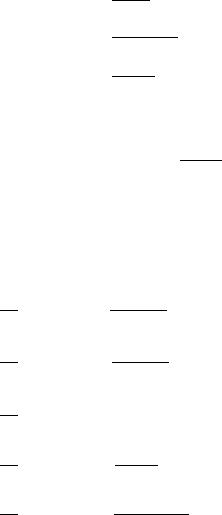
122 |
|
|
|
|
|
|
|
|
|
|
|
|
|
|
|
|
CHAPTER 3. |
DIFFERENTIATION |
|||||||||||||||||||||
Example 3.3.6 Let u = arccot x, |
x (−∞, 0] [0, ∞) and |
||||||||||||||||||||||||||||||||||||||
|
π |
|
π |
|
|
|
|
|
|
|
|
|
|
|
|
|
|
|
|
|
|
|
|
|
|
|
|
|
|
|
|
|
|
|
|
|
|||
u 0, |
|
i |
h |
|
, π . Then |
|
|
|
|
|
|
|
|
|
|
|
|
|
|
|
|
|
|
|
|
|
|
|
|
|
|
|
|
|
|||||
2 |
2 |
|
|
|
|
|
|
|
|
|
|
|
|
|
|
|
|
|
|
|
|
|
|
|
|
|
|
|
|
|
|||||||||
|
|
|
|
|
|
|
|
|
|
|
|
|
|
|
|
|
|
|
|
|
π |
|
|
|
|
π |
|
|
|
|
|
|
|||||||
|
|
|
|
|
|
|
|
x = cot u, |
|
u 0, |
|
|
|
i h |
|
|
|
, π |
|
|
|
|
|
||||||||||||||||
|
|
|
|
|
|
|
|
|
|
2 |
2 |
|
|
|
|
|
|||||||||||||||||||||||
and |
|
|
|
|
|
|
|
|
|
|
|
|
|
|
|
|
|
|
|
|
|
|
|
|
|
|
|
|
|
|
|
|
|
|
|
|
|
|
|
|
|
|
|
|
|
|
|
dx |
|
|
|
|
|
|
du |
|
|
|
|
|
|
|
|
|
|
π |
|
|
π |
|
|
||||||||
|
|
|
|
1 = |
|
= |
− csc2(u) · |
|
|
, u 0, |
|
|
|
i |
h |
|
|
, π |
|||||||||||||||||||||
|
|
|
|
dx |
dx |
2 |
2 |
||||||||||||||||||||||||||||||||
|
|
|
|
du |
|
= |
−1 |
, u |
|
|
0, |
π |
|
|
|
|
|
|
π |
, π |
|
|
|
|
|
|
|
|
|
||||||||||
|
|
|
|
dx |
csc2 u |
|
|
|
|
|
|
|
|
|
|
|
|
|
|
|
|
||||||||||||||||||
|
|
|
|
|
|
|
|
|
|
2 i h |
2 |
|
|
|
|
|
|
|
|
|
|
||||||||||||||||||
|
|
|
|
|
|
|
= |
|
−1 |
|
, u |
|
|
0, |
π |
|
|
|
|
π |
, π |
|
|
|
|
|
|
||||||||||||
|
|
|
|
|
|
|
1 + cot2 u |
|
2 i h |
2 |
|
|
|
|
|
|
|||||||||||||||||||||||
|
|
|
|
|
|
|
|
|
|
|
|
|
|
|
|
|
|
|
|
||||||||||||||||||||
|
|
|
|
|
|
|
= |
−1 |
|
, |
x |
|
( |
|
, 0] |
|
[0, |
∞ |
). |
|
|
|
|
|
|
||||||||||||||
|
|
|
|
|
|
|
1 + x2 |
|
|
|
|
|
|
|
|
||||||||||||||||||||||||
|
|
|
|
|
|
|
|
|
|
−∞ |
|
|
|
|
|
|
|
|
|
|
|
|
|||||||||||||||||
Therefore, |
|
|
|
|
|
|
|
|
|
|
|
|
|
|
|
|
|
|
|
|
|
|
|
|
|
|
|
|
|
|
|
|
|
|
|
|
|
||
|
|
|
|
dx |
|
|
|
|
|
1 + x2 |
|
|
|
|
|
−∞ |
|
|
|
|
|
|
∞ |
|
|||||||||||||||
|
|
|
|
d |
(arccotx) = |
|
−1 |
|
, |
|
|
x |
|
|
|
|
|
( |
|
|
|
, 0] |
|
[0, |
|
). |
|||||||||||||
|
|
|
|
|
|
|
|
|
|
|
|
|
|
|
|
|
|
|
|
|
|
||||||||||||||||||
The results of these examples are summarized in the following theorem:
Theorem 3.3.2 (The Inverse Trigonometric Functions) The following differentiation formulas are valid for the inverse trigonometric functions:
(i)dxd
(ii)dxd
(iii)dxd
(iv)dxd
(v)dxd
|
1 |
|
|
|
|
|
|
|
|
|
||||
(arcsin x) = |
√ |
|
|
|
|
|
, −1 < x < 1. |
|
||||||
1 − x2 |
|
|
||||||||||||
(arccos x) = |
√ |
−1 |
|
|
, −1 < x < 1. |
|
||||||||
1 − x |
2 |
|
||||||||||||
|
|
|
|
|
|
|
|
|
|
|
|
|||
(arctan x) = |
1 |
|
, |
|
−∞ < x < ∞. |
|||||||||
|
|
|
|
|
||||||||||
|
|
1 + x2 |
|
|||||||||||
|
|
|
1 + x2 |
|
|
|
−∞ |
|
∞ |
|
||||
(arccot x) = |
|
|
|
|
−1 |
, |
|
|
|
< x < |
|
. |
||
|
|
|
|
|
|
|
|
|
|
|||||
|
1 |
|
|
|
|
|
|
|
|
|||||
(arcsec x) = |
|
|
|x|√ |
|
, −∞ < x < −1 or 1 < x < ∞. |
|||||||||
|
|
x2 − 1 |
||||||||||||

3.3. DIFFERENTIATION OF INVERSE FUNCTIONS |
|
123 |
|||||||||||||
|
dx |
|
|
|
|
|x|√x2 − 1 |
|
−∞ |
|
− |
|
∞ |
|
||
(vi) |
d |
(arccsc x) = |
|
−1 |
, |
|
< x < |
|
1 or 1 < x < |
|
. |
||||
|
|
|
|
|
|
|
|||||||||
Proof. Proof of Theorem 3.3.2 is outlined in Examples 76–80. |
|
||||||||||||||
Theorem 3.3.3 (Logarithmic and Exponential Functions) |
|
|
|||||||||||||
(i) |
d |
|
(ln x) = |
1 |
|
for all x > 0. |
|
|
|
|
|
|
|||
dx |
|
|
|
|
|
|
|
||||||||
|
|
x |
|
|
|
|
|
|
|
|
|||||
(ii) |
d |
|
(ex) = ex for all real x. |
|
|
|
|
|
|
|
|||||
dx |
|
|
|
|
|
|
|
||||||||
|
|
|
|
|
|
|
|
|
|
|
|
|
|
||
|
d |
1 |
for all x > 0 and b 6= 1. |
|
|
||||||||||
(iii) |
|
|
(logb x) = |
|
|
|
|||||||||
dx |
x ln b |
|
|
||||||||||||
(iv)dxd (bx) = bx(ln b) for all real x, b > 0 and b 6= 1.
(v)d (u(x)v(x) = (u(x))v(x) v0(x) ln(u(x)) + v(x) u0(x) . dx u(x)
Proof. Proof of Theorem 3.3.3 is outlined in the proofs of Theorems 5.5.1– 5.5.5. We illustrate the proofs of parts (iii), (iv) and (v) here.
Part (iii) By definition for all x > 0, b > 0 and b 6= 1,
ln x logb x = ln b .
Then,
dx |
(logb x) = dx |
ln b ln x |
||
d |
|
d |
1 |
|
= |
1 |
|
|
· |
1 |
|
|
|
|
|
|
||
|
ln b |
x |
||||
= |
1 |
. |
|
|
||
|
|
|
||||
|
x ln b |
|
|
|||
Part (iv) By definition, for real x, b > 0 and b 6= 1,
bx = ex ln b.

124 |
|
|
|
|
|
|
|
CHAPTER 3. DIFFERENTIATION |
|
Therefore, |
|
|
|
|
|
|
|
||
|
d |
|
(bx) = |
d |
(ex ln b) |
|
|||
|
dx |
|
|
||||||
|
|
dx |
|
|
|||||
|
|
|
= ex ln b, |
d |
|
(x ln b) |
(by the chain rule) |
||
|
|
|
dx |
||||||
|
|
|
|
|
|
|
|
||
|
|
|
= bx ln b. |
|
(Why?) |
||||
Part (v)
dxd (u(x))v(x) = dxd ev(x) ln(u(x))
= ev(x) ln(u(x)) v0(x) ln(u(x)) + v(x) u0(x) u(x)
= (u(x))v(x) v0(x) ln u(x) + v(x) u0(x) u(x)
Example 3.3.7 Let y = log10(x2 + 1). Then
d |
|
d |
|
|
ln(x2 + 1) |
|
|||||||
|
|
(log10(x2 + 1)) = |
|
|
|
|
|
|
|
|
|
|
|
dx |
dx |
|
ln 10 |
|
|
||||||||
|
|
|
1 |
|
|
1 |
|
|
|
|
|
||
|
|
= |
|
|
|
|
|
|
· 2x |
(by the chain rule) |
|||
|
|
ln 10 |
x2 + 1 |
||||||||||
|
|
|
|
|
|
2x |
|
|
|
||||
|
|
= |
|
. |
|
|
|
||||||
|
|
(x2 + 1) ln 10 |
|
|
|
||||||||
Example 3.3.8 Let y = ex2+1. Then, by the chain rule, we get
dxdy = ex2+1 · 2x = 2xex2+1.

3.3. DIFFERENTIATION OF INVERSE FUNCTIONS |
125 |
Example 3.3.9 Let y = 10(x3+2x+1). By definition and the chain rule, we get
Example 3.3.10 |
|
|
|
|
|
|
|
|
|
|
|
|
||||||
|
dx |
|
|
|
|
+ 1)sin x cos x ln(x2 |
|
|
|
|
x |
|
|
|
|
|||
|
|
|
(x2 |
+ 1)sin x = (x2 |
+ 1) + sin x · |
2 |
|
|
|
|
||||||||
|
dx |
x2 + 1 |
|
|
|
|||||||||||||
|
d |
|
|
d |
2 |
|
2 |
+1) · cos x ln(x2 + 1) + sin x · |
x |
|
||||||||
|
|
|
(x2 |
+ 1)sin x = |
|
|
hesin x ln(x |
+1)i = 3sin x ln(x |
2 |
|
||||||||
|
dx |
dx |
x2 + 1 |
|||||||||||||||
|
|
|
|
|
|
|
+ 1)sin x cos x ln(x2 |
|
|
2x sin x |
|
|
|
|
||||
|
|
|
|
= (x2 |
+ 1) + |
|
. |
|
|
|
|
|||||||
|
|
|
|
x2 + 1 |
|
|
|
|
||||||||||
Theorem 3.3.4 (Di erentiation of Hyperbolic Functions)
(i) |
|
d |
|
(sinh x) = cosh x |
(ii) |
|
d |
|
(cosh x) = sinh x |
|||||
dx |
dx |
|||||||||||||
|
|
|
|
|
||||||||||
(iii) |
|
|
d |
|
(tanh x) = sech2x |
(iv) |
|
d |
(cothx) = −csch2x |
|||||
|
|
|
|
|
|
|
||||||||
|
|
dx |
|
dx |
||||||||||
(v) |
|
d |
|
(sech x) = −sech x tanh x |
(vi) |
|
d |
(csch x) = −csch x coth x. |
||||||
|
|
|
|
|
|
|
||||||||
|
dx |
|
|
dx |
||||||||||
Proof.
Part (i)
d |
(sinh x) = |
d |
|
1 |
(ex |
||
|
|
|
|
|
|||
dx |
dx |
2 |
|||||
=21 (ex − e−x
=21 (ex + e−x
=cosh x.
− e−x)
(−1)) (by the chain rule)
)
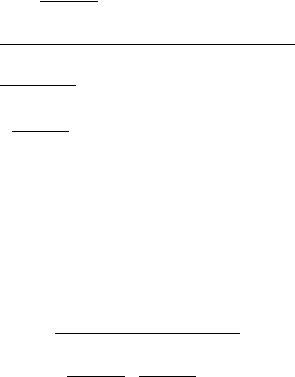
126 |
CHAPTER 3. DIFFERENTIATION |
Part (ii)
|
|
|
|
|
|
||
d |
(cosh x) = |
d |
|
1 |
(ex + e−x) |
|
|
dx |
|
dx 2 |
|
||||
|
= |
1 |
(ex + e−x(−1)) |
(by the chain rule) |
|||
|
|
|
|||||
|
2 |
|
|||||
|
= |
1 |
(ex − e−x) |
|
|||
|
|
|
|
||||
|
2 |
|
|
||||
|
|
|
= sinh x. |
|
|||
Part (iii) |
|
|
|
|
|
||
|
d |
|
(tanh x) = |
d |
|
ex − e−x |
|
|
dx |
dx |
ex + e−x |
|
|||
|
|
||||||
|
|
|
= |
(ex + e−x)(ex + e−x) − (ex − e−x)(ex − e−x) |
|||
|
|
|
|
|
|
|
(ex + e−x)2 |
4
=(ex + e−x)2
2
2
=ex + e−x
=sech2x.
Part (iv)
d |
(sech x) = |
d |
2 |
||
|
|
|
|
|
|
dx |
dx |
ex + e−x |
|||
= (ex + e−x) · 0 − 2(ex − e−x) (ex + e−x)2
2ex − e−x
=−ex + e−x · ex + e−x
=−sech x tanh x.
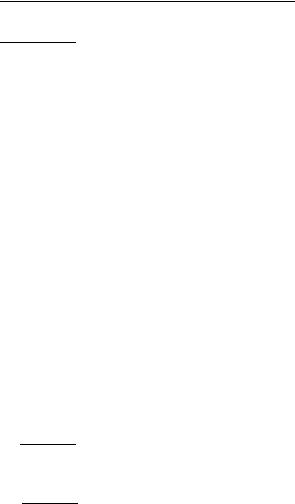
3.3. DIFFERENTIATION OF INVERSE FUNCTIONS |
127 |
|||||||||||
Part (v) |
|
|
|
|
|
|
|
|
|
|
||
|
d |
|
d |
|
ex + e−x |
|
|
|||||
|
|
|
(coth x) = |
|
|
|
|
, x 6= 0 |
|
|||
|
dx |
dx |
ex − e−x |
|
||||||||
|
|
|
= |
(ex − e−x)(ex − e−x) − (ex + e−x)(ex + e−x) |
x = 0 |
|||||||
|
|
|
|
|
|
−4 |
|
|
|
(ex − e−x)2 |
6 |
|
|
|
|
= |
|
|
, |
|
x = 0 |
|
|||
|
|
|
(ex − e−x)2 |
|
|
|||||||
|
|
|
|
|
|
|
6 |
|
||||
|
|
|
= − |
2 |
2 |
, x 6= 0 |
|
|||||
|
|
|
ex e−x |
|
||||||||
|
|
|
|
|
|
|
− |
|
|
|
|
|
|
|
|
= −csch2x , |
x 6= 0. |
|
|||||||
Part (vi)
d |
(csch x) = |
d |
2 |
|
|
|
, x 6= 0 |
|
|||||||
|
|
|
|
|
|
|
|
|
|
|
|||||
dx |
dx |
|
ex − e−x |
|
|||||||||||
|
|
= (ex − e−x) · 0 − 2(ex + e−x) |
, x = 0 |
||||||||||||
|
|
|
|
|
|
|
(ex − e−x)2 |
|
6 |
||||||
|
|
|
|
|
|
2 |
|
|
ex + e−x |
|
|||||
|
|
= − |
|
|
· |
|
, x 6= 0 |
||||||||
|
|
ex − e−x |
ex − e−x |
||||||||||||
|
|
= −csch x coth x, |
x 6= 0. |
|
|||||||||||
Theorem 3.3.5 (Inverse Hyperbolic Functions)
|
d |
|
1 |
|
|
|
|
||||||
(i) |
|
|
(arcsinh x) = |
√ |
|
|
|
|
|
||||
dx |
|
|
|||||||||||
1 + x2 |
|
|
|
||||||||||
|
d |
|
1 |
|
|
|
|
||||||
(ii) |
|
|
(arccosh x) = |
√ |
|
, |
x > 1 |
||||||
dx |
|||||||||||||
x2 − 1 |
|||||||||||||
(iii) |
d |
(arctanh x) = |
1 |
, |
|
|x| < 1 |
|||||||
|
|
|
|
|
|
||||||||
dx |
|
|
1 − x2 |
|
|||||||||
Proof.
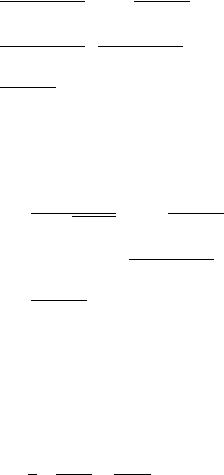
128 |
|
|
|
|
|
|
|
|
|
|
|
|
|
|
|
|
|
|
|
|
|
|
|
|
|
CHAPTER 3. |
|
DIFFERENTIATION |
||||||||||||||||||||
Part (i) |
|
|
|
|
|
|
|
|
|
|
|
|
|
|
|
|
|
|
|
|
|
|
|
|
|
|
|
|
|
|
|
|
|
|
|
|
|
|
|
|
|
|
|
|
|
|
||
|
d |
|
|
|
|
|
d |
ln(x + √ |
|
|
|
|
|
|
) |
|
|
|
|
|
|
|
|
|
|
|
|
|
|
|
||||||||||||||||||
|
(arcsinh x) = |
1 + x2 |
|
|
|
|
|
|
|
|
|
|
|
|
|
|
|
|||||||||||||||||||||||||||||||
|
dx |
|
|
|
|
|
|
|
|
|
|
|
|
|
|
|
|
|
||||||||||||||||||||||||||||||
|
|
|
|
|
|
dx |
|
|
|
|
|
|
|
|
|
|
|
|
|
|
|
|
|
|
|
|
|
|
|
|
|
|
|
|
|
|
||||||||||||
|
|
|
|
|
|
|
1 |
|
|
|
|
|
|
|
|
|
|
|
|
|
|
|
|
|
|
|
|
|
x |
|
|
|
||||||||||||||||
|
|
|
|
|
|
|
= |
x + √ |
|
|
|
|
|
|
|
|
|
· |
|
1 + |
|
√ |
|
|
|
|
|
|
|
|
|
|
|
|
(by chain rule) |
|||||||||||||
|
|
|
|
|
|
|
1 + x2 |
|
1 + x2 |
|
|
|
||||||||||||||||||||||||||||||||||||
|
|
|
|
|
|
|
|
|
|
|
|
|
|
|
|
|
|
|
|
|
√ |
|
|
|
|
|
|
|
|
+ x |
|
|
|
|
|
|||||||||||||
|
|
|
|
|
|
|
1 |
|
|
|
|
|
|
|
|
1 + x2 |
|
|
|
|
|
|||||||||||||||||||||||||||
|
|
|
|
|
|
|
= |
x + √ |
|
|
|
|
|
|
|
· |
√ |
|
|
|
|
|
|
|
|
|
|
|
|
|
|
|||||||||||||||||
|
|
|
|
|
|
|
1 + x2 |
1 + x2 |
|
|
|
|
|
|
|
|||||||||||||||||||||||||||||||||
|
|
|
|
|
|
|
1 |
|
|
|
|
|
|
|
|
|
|
|
|
|
|
|
|
|
|
|
|
|
|
|
|
|
|
|
|
|
|
|
|
|
|
|
|
|
||||
|
|
|
|
|
|
|
= |
√ |
|
|
|
|
|
. |
|
|
|
|
|
|
|
|
|
|
|
|
|
|
|
|
|
|
|
|
|
|
|
|
|
|
|
|
|
|
|
|||
|
|
|
|
|
|
|
1 + x2 |
|
|
|
|
|
|
|
|
|
|
|
|
|
|
|
|
|
|
|
|
|
|
|
|
|
|
|
|
|
|
|
||||||||||
Part (ii) |
|
|
|
|
|
|
|
|
|
|
|
|
|
|
|
|
|
|
|
|
|
|
|
|
|
|
|
|
|
|
|
|
|
|
|
|
|
|
|
|
|
|
||||||
|
|
|
|
d |
|
|
|
|
d |
|
|
|
|
|
|
|
|
√ |
|
|
|
|
|
|
|
|
|
|
|
|
|
|
|
|
|
|
|
|||||||||||
|
|
|
|
|
|
|
|
|
|
|
|
|
|
|
|
|
2 |
|
− 1) , |
|
|
≥ 1 |
||||||||||||||||||||||||||
|
|
|
|
|
|
|
(arccosh x) = |
|
|
|
|
ln(x + |
|
|
|
|
x |
|
|
|
x |
|||||||||||||||||||||||||||
|
|
|
|
dx |
dx |
|
|
|
|
|
||||||||||||||||||||||||||||||||||||||
|
|
|
|
|
|
|
|
= |
x + √1x2 |
|
|
1 |
· 1 + |
√ |
|
x |
|
|
, x > 0 |
|||||||||||||||||||||||||||||
|
|
|
|
|
|
|
|
− |
x2 |
|
1 |
|||||||||||||||||||||||||||||||||||||
|
|
|
|
|
|
|
|
|
|
|
|
|
|
|
|
|
|
|
|
|
|
|
|
|
|
|
|
|
|
√ |
|
|
|
|
|
|
|
|
|
|
− |
|
|
|||||
|
|
|
|
|
|
|
= |
|
|
|
|
|
|
|
1 |
|
|
|
|
|
|
|
|
|
|
|
x2 − 1 |
+ x |
, x > 0 |
|||||||||||||||||||
|
|
|
|
|
|
|
|
|
|
|
|
|
|
|
|
|
|
|
|
|
|
|
|
|
|
|
|
|
|
|
|
|
|
|||||||||||||||
|
|
|
|
|
|
|
|
|
|
|
x + √x2 − 1 · √x2 − 1 |
|
|
|
||||||||||||||||||||||||||||||||||
|
|
|
|
|
|
|
|
= |
√ |
|
|
|
1 |
|
|
|
|
|
|
, x > 0. |
|
|
|
|
|
|||||||||||||||||||||||
|
|
|
|
|
|
|
|
|
|
|
|
|
|
|
|
|||||||||||||||||||||||||||||||||
|
|
|
|
|
|
|
|
x2 − 1 |
|
|
|
|
|
|||||||||||||||||||||||||||||||||||
Part (iii) |
|
|
|
|
|
|
|
|
|
|
|
|
|
|
ln |
1 − x , |
|
|
|
|
|
|||||||||||||||||||||||||||
|
|
|
dx |
(arctanh x) = dx |
2 |
|
|x| < 1 |
|||||||||||||||||||||||||||||||||||||||||
|
|
|
|
d |
|
|
|
|
|
d |
|
|
1 |
|
|
|
|
|
|
|
1 + x |
|
|
|
|
|
|
|||||||||||||||||||||
|
|
|
|
|
|
|
|
= dx |
|
2 |
ln(1 + x) − ln(1 − x) , |x| < 1 |
|||||||||||||||||||||||||||||||||||||
|
|
|
|
|
|
|
|
|
|
|
d |
|
1 |
|
|
|
|
|
|
|
|
|
|
|
|
|
|
|
|
|
|
|
|
|
|
|
|
|
|
|
|
|||||||
|
|
|
|
|
|
|
|
= 2 |
1 + x − 1−1x , |x| < 1 |
|||||||||||||||||||||||||||||||||||||||
|
|
|
|
|
|
|
1 |
|
|
|
|
|
|
1 |
|
|
|
|
|
|
|
|
|
|
|
|
|
|
|
|
|
|
|
|
|
|
|
|
|
|
|
|
||||||
−
1 |
|
|
1 |
1 |
|
|
, |x| < 1 |
|||
= |
|
|
|
|
+ |
|
|
|||
2 |
|
1 + x |
1 − x |
|||||||
= 2 |
|
−1 − x2 |
|
, |x| < 1 |
||||||
|
1 |
|
1 |
|
x + 1 + x |
|
|
|
||
= |
|
1 |
|
|
, |
|x| < 1. |
|
|||
|
|
|||||||||
1 − x2 |
|
|||||||||
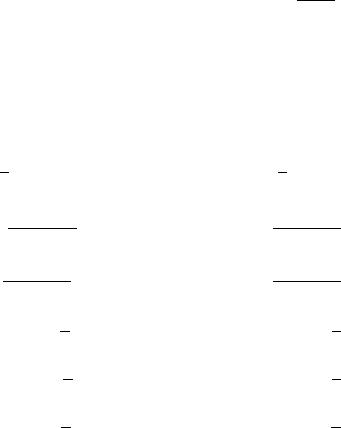
3.3. DIFFERENTIATION OF INVERSE FUNCTIONS |
|
|
129 |
|||||||
Exercises 3.3 Compute |
dy |
|
for each of the following: |
|
|
|
||||
dx |
|
|
|
|||||||
|
|
|
|
|
|
|
|
|
||
|
|
|
|
|
1 + x |
− |
|
|||
1. |
y = ln(x2 + 1) |
|
|
2. |
y = ln |
1 − x |
|
, |
|
1 < x < 1 |
|
|
|
|
|||||||
3. |
y = log2(x) |
|
|
4. |
y = log5(x3 + 1) |
|
|
|||
5.y = log10(3x + 1)
7.y = 2e−x
9.y = 21 (ex2 − e−x2 )
ex2 − e−x2
11. y = ex2 + e−x2
2 13. y = ex3 − e−x3
15.y = arcsin x2
17.y = arctan x5
19.y = arcsec x2
21.y = 3 sinh(2x) + 4 cosh 3x
23.y = e−x(4 sin 3x − 3 cos 3x)
25.y = 3 tanh(2x) − 7 coth (2x)
27.y = 10x2
29.y = 5(x4+x2)
6.y = log10(x2 + 4)
8.y = ex2
10.y = 21 (ex2 + e−x2 )
2 12. y = ex2 + e−x2
2 14. y = ex4 + e−x4
16. y = arccos x3
18. y = arccot x7
20. y = arccsc x3
22. y = ex(3 sin 2x + 4 cos 2x) 24. y = 4 sinh 2x + 3 cosh 2x
26.y = 3 sech (5x) + 4 csch (3x)
28.y = 2(x3+1)
30.y = 3sin x
130 |
|
|
|
|
|
|
CHAPTER 3. DIFFERENTIATION |
||||||
31. |
cos(x2) |
|
|
|
|
|
32. |
tan(x3) |
|
|
|
|
|
y = 4 |
|
|
|
|
|
y = 10 |
|
|
|
|
|
||
33. |
y = 2cot x |
|
|
|
|
|
34. |
y = 10sec(2x) |
|
|
|
|
|
35. |
y = 4csc(x2) |
|
|
|
|
|
36. |
y = e−x(2 sin(x2) + 3 cos(x3)) |
|||||
|
y = arcsinh |
x |
|
|
|
x |
|
||||||
37. |
|
|
|
38. |
y = arccosh |
|
|
|
|||||
2 |
|
3 |
|
||||||||||
39. |
y = arctan |
x |
|
40. |
y = x arcsinh |
x |
|
||||||
|
|
|
|
||||||||||
4 |
|
3 |
|||||||||||
In exercises 41–50, use the following procedure to compute the derivative of the given functions:
|
|
d |
|
d |
|
|
|
|
|
|
|
|
|
||
|
|
|
[(f(x)g(x)] = |
|
|
|
[eg(x) ln(f(x))] |
|
|
|
|
|
|
|
|
|
|
dx |
|
dx |
|
|
|
|
|
|
|
|
|||
|
|
|
= eg(x) ln(f(x)) · g0(x) ln(f(x)) + g(x) f0((x)) |
|
|||||||||||
|
|
|
|
|
|
|
|
|
|
|
|
|
f x |
|
|
|
|
|
= (f(x))g(x) · g0(x) ln(f(x)) + g(x) f0((x)) . |
|
|||||||||||
|
|
|
|
|
|
|
|
|
|
|
|
f x |
|
|
|
41. |
y = (x2 + 4)3x |
|
|
|
42. |
y = (2 + sin x)cos x |
|
|
|||||||
43. |
|
|
sin 2x |
|
|
|
44. |
y = (x |
2 |
|
x2+1 |
|
|
||
y = (3 + cos x) |
|
|
|
|
+ 4) |
|
|
|
|
||||||
45. |
y = (1 + x)1/x |
|
|
|
46. |
y = (1 + x2)cos 3x |
|
|
|||||||
47. |
y = (2 sin x + 3 cos x) |
x3 |
48. |
|
|
|
|
1/x2 |
|
|
|||||
|
|
|
y = (1 + ln x) |
|
|
||||||||||
49. |
|
|
cosh x |
|
|
|
50. |
|
|
2 |
2 |
x2 |
+3 |
||
y = (1 + sinh x) |
|
|
|
y = (sinh |
x + cosh |
x) |
|
||||||||
3.4Implicit Di erentiation
So far we have dealt with explicit functions such as x2, sin x, cos x, ln x, ex, sinh x and cosh x etc. In applications, two variables can be related by an equation such as

3.4. IMPLICIT DIFFERENTIATION |
131 |
|
(i) x2 +y2 = 16 |
(ii) x3 +y3 = 4xy |
(iii) x sin y +cos 3y = sin 2y. |
In such cases, it is not always practical or desirable to solve for one variable explicitly in terms of the other to compute derivatives. Instead, we may implicitly assume that y is some function of x and di erentiate each term of the equation with respect to x. Then we solve for y0, noting any conditions under which the derivative may or may not exist. This process is called implicit di erentiation. We illustrate it by examples.
Example 3.4.1 Find dxdy if x2 + y2 = 16.
Assuming that y is to be considered as a function of x, we di erentiate each term of the equation with respect to x.
graph
dxd (x2) + dxd (y2) = dxd (16)
2x + 2y |
|
dy |
|
= 0 |
|
|
(Why?) |
||
|
dx |
||||||||
|
|
|
|
|
|
||||
|
2y |
dy |
= −2x |
|
|||||
|
|
|
|
||||||
|
dx |
|
|||||||
|
|
|
dy |
= − |
x |
, provided y 6= 0. |
|||
|
|
|
|
|
|
|
|||
|
|
|
dx |
y |
|||||
We observe that there are two points, namely (4, 0) and (−4, 0) that satisfy the equation. At each of these points, the tangent line is vertical and hence, has no slope.
If we solve for y in terms of x, we get two solutions, each representing a function of x:
y = (16 − x2)1/2 or y = −(16 − x2)1/2.

132 |
|
|
|
|
|
|
|
|
|
|
|
|
CHAPTER 3. DIFFERENTIATION |
|||||||
On di erentiating each function with respect to x, we get, respectively, |
||||||||||||||||||||
|
dy |
1 |
|
|
|
|
|
|
|
|
|
|
dy |
1 |
||||||
|
|
|
= |
|
|
(16 − x2)−1/2(−2x) ; or |
|
|
= − |
|
(16 − x2)−1/2(−2x) |
|||||||||
|
dx |
2 |
dx |
2 |
||||||||||||||||
|
dy |
= − |
|
x |
|
|
|
|
|
|
x |
|
|
|||||||
|
|
|
|
|
; |
or |
|
|
|
|
|
|
|
|||||||
|
dx |
(16 − x2)1/2 |
|
−(16 − x2)1/2 |
|
|
||||||||||||||
|
dy |
|
|
|
x |
dy |
|
|
x |
|
|
|
|
|
|
|||||
|
|
|
= − |
|
, y 6= 0; or |
|
|
= − |
|
|
, y 6= 0. |
|
|
|||||||
|
dx |
y |
dx |
y |
|
|
||||||||||||||
In each case, the final form is the same as obtained by implicit di erentiation.
Example 3.4.2 Compute dxdy for the equation x3 + y3 = 4xy.
As in Example 2.4.1, we di erentiate each term with respect to x, assum-
ing that y is a function of x. |
|
|
|
|
|
|
|
|
|||||||||||
|
dy |
(x3) + |
|
d |
(y3) = |
|
d |
|
(4xy) |
|
|
|
|
||||||
|
|
|
|
|
|
|
|
|
|
||||||||||
|
dx |
|
dx |
= |
|
dx |
|
dx |
(Why?) |
||||||||||
|
3x2 + 3y2 |
dx |
4 dx y + x |
||||||||||||||||
|
|
|
|
|
|
|
dy |
|
|
|
|
dx |
|
dy |
|
|
|||
|
(3y2) |
dy |
|
|
|
|
dy |
|
4y − 3x2 |
|
|
|
|
||||||
|
|
− 4x |
|
|
= |
|
|
|
(Why?) |
||||||||||
|
dx |
dx |
|
|
|
||||||||||||||
|
|
(3y2 − |
4x) |
dy |
= |
4y − 3x2 |
|
|
|
(Why?) |
|||||||||
|
|
|
|
|
|
|
|||||||||||||
|
|
dx |
|
|
|
||||||||||||||
|
|
|
|
|
|
|
|
|
dy |
|
= |
|
4y − 3x2 |
, if 3y2 |
− |
4x = 0. (Why?) |
|||
|
|
|
|
|
|
|
|
|
dx |
|
3y2 − 4x |
||||||||
|
|
|
|
|
|
|
|
|
|
|
|
|
6 |
||||||
This di erentiation formula is valid for all points (x, y) on the given curve, where 3y2 − 4x 6= 0.
Example 3.4.3 Compute dxdy for the equation x sin y + cos 3y = sin 2y. In this example, it certainly is not desirable to solve for y explicitly in terms of
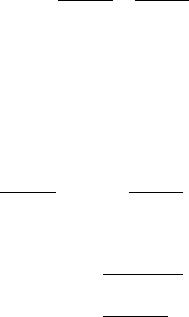
3.4. IMPLICIT DIFFERENTIATION |
133 |
x. We consider y to be a function of x, di erentiate each term of the equation with respect to x and then algebraically solve for y in terms of x and y.
|
|
d |
|
(x sin y) + |
d |
|
(cos 3y) = |
d |
|
|
(sin 2y) |
|
|
|
|
|
|
|
|
||||||||||||||
|
|
dx |
|
|
|
|
|
|
|
|
|
|
|
|
|
|
|
||||||||||||||||
|
|
|
|
dx |
|
|
|
|
dx |
|
|
|
|
|
|
|
|
|
2dx |
||||||||||||||
dx (sin y) + x dx (sin y) + (−3 sin 3y) dx = (cos 2y) |
|||||||||||||||||||||||||||||||||
|
dx |
|
|
|
|
|
d |
|
|
|
|
|
|
|
|
|
|
|
|
|
|
|
|
|
dy |
|
|
dy |
|||||
|
|
|
|
|
|
|
|
|
|
|
|
|
dy |
|
|
|
|
|
|
|
|
|
dy |
dy |
|
|
|||||||
|
|
|
|
sin y + x(cos y) |
|
|
− 3 sin(3y) |
|
|
|
|
= (2 cos 2y) |
|
. |
|||||||||||||||||||
|
|
|
|
|
dx |
dx |
dx |
||||||||||||||||||||||||||
Upon collecting all terms containing |
|
dy |
on the left-side, we get |
|
|
||||||||||||||||||||||||||||
|
|
|
|
|
|||||||||||||||||||||||||||||
|
|
|
|
|
|
|
|
|
|
|
|
|
|
|
|
|
dx |
|
|
|
|
|
|
|
|
|
|
|
|||||
|
|
|
|
|
|
|
|
|
|
|
|
|
|
|
|
|
|
|
|
|
|
|
|
|
dy |
|
|
|
|||||
|
|
|
|
[x cos y − 3 sin 3y − 2 cos 2y] |
|
|
|
|
= − sin y |
|
|
|
|||||||||||||||||||||
|
|
|
|
|
|
dx |
|
|
|
||||||||||||||||||||||||
|
|
|
|
|
dy |
|
|
|
|
|
|
|
|
sin y |
|
|
|
|
|
|
|
|
|
|
|
||||||||
|
|
|
|
|
|
|
= − |
|
|
|
|
|
|
|
|
|
|
|
|
|
|
|
|||||||||||
|
|
|
|
|
dx |
x cos y |
− |
3 sin 3y |
− |
2 cos 2y |
|
|
|
||||||||||||||||||||
whenever |
|
|
|
|
|
|
|
|
|
|
|
|
|
|
|
|
|
|
|
|
|
|
|
|
|
||||||||
|
|
x cos y − 3 sin 3y − 2 cos 2y 6= 0. |
|
|
|
||||||||||||||||||||||||||||
|
|
|
|
|
|
|
|
|
|||||||||||||||||||||||||
Example 3.4.4 Find |
|
dy |
for |
(x − 2)2 |
|
+ |
(y − 3)2 |
= 1. |
|
|
|
||||||||||||||||||||||
|
|
|
|
|
|
|
|||||||||||||||||||||||||||
|
|
|
|
|
|
|
dx |
9 |
|
|
|
|
16 |
|
|
|
|
|
|
|
|
||||||||||||
On di erentiating each term with respect to x, we get
graph
d |
|
|
(x − 2)2 |
+ |
d |
|
|
|
(y − 3)2 |
|
= |
d |
|
(1) |
|||||||
dx |
|
|
|
dx |
|
|
dx |
||||||||||||||
|
9 |
|
|
|
|
16 |
|
|
|
|
|||||||||||
|
|
|
2 |
(x − 2) + |
2 |
|
|
(y − 3) |
dy |
|
= 0 |
|
|
|
|||||||
|
|
9 |
16 |
dx |
|
|
|
|
|||||||||||||
|
|
|
|
|
|
dy |
= |
|
|
|
2(x − 2)/9 |
|
, if y = 3 |
||||||||
|
|
|
|
|
|
|
|
|
|
|
|
||||||||||
|
|
|
|
|
|
dx |
−2(y |
− |
3)/16 |
|
|
6 |
|
||||||||
|
|
|
|
|
|
|
|
|
|
||||||||||||
|
|
|
|
|
|
|
= |
− |
16(x − 2) |
, |
if y = 3. |
|
|||||||||
|
|
|
|
|
|
|
|
|
|
|
9(y |
− |
3) |
|
|
|
|
|
|
||
|
|
|
|
|
|
|
|
|
|
|
|
|
|
|
|
|
|
|
|||

134 |
CHAPTER 3. DIFFERENTIATION |
The tangent lines are vertical at (−1, 3) and (5, 3). The graph of this equation is an ellipse.
Example 3.4.5 Find dxdy for the astroid x2/3 + y2/3 = 16.
graph
dxd (x2/3) + dxd (y2/3) = 0
23 x−1/3 + 23 y−1/3 dxdy = 0, if x 6= 0 and y 6= 0
dy |
|
y−1/3 |
= − |
x |
|
1/3 |
|
= − |
|
|
, if x 6= 0 and y 6= 0. |
||
dx |
x−1/3 |
y |
Example 3.4.6 Find dxdy for the lemniscate with equation (x2 + y2)2 = 4(x2 − y2).
graph

3.4. IMPLICIT DIFFERENTIATION |
135 |
|
|
|
|
|
d |
|
|
|
|
d |
|
|
|
|||||
|
|
|
|
|
|
((x2 + y2)2) = 4 |
|
|
|
(x2 − y2) |
||||||||
|
|
|
|
|
dx |
|
dx |
|||||||||||
|
|
|
2(x2 + y2) 2x + 2y dx |
= 4 |
2x − 2y dx |
|||||||||||||
|
|
|
|
|
|
|
|
|
|
dy |
|
|
|
|
|
dy |
|
|
[4y(x2 + y2) + 8y] |
dy |
= 8x − 4x(x2 + y2) (Why?) |
||||||||||||||||
|
|
|||||||||||||||||
dx |
||||||||||||||||||
dy |
|
= |
|
8x − 4x(x2 + y2) |
, if 4y(x2 + y2) + 8y = 0, y = 0. |
|||||||||||||
dx |
4y(x2 + y2) + 8y |
|||||||||||||||||
|
|
|
|
|
|
|
|
6 6 |
||||||||||
Example 3.4.7 Find the equations of the tangent and normal lines at (x0, y0) to the graph of an ellipse of the form
(x − k)2 + (y − k)2 = 1. a2 b2
First, we find dxdy by implicit di erentiation as follows:
d |
|
|
(x − h)2 |
|
+ |
d |
|
|
|
(y − k)2 |
|
= |
d |
|
(1) |
|||||||||||||
dx |
|
|
|
|
|
|
dx |
|
|
|
dx |
|||||||||||||||||
|
a2 |
|
|
|
b2 |
|
|
|||||||||||||||||||||
|
|
|
|
2 |
|
|
|
|
|
|
2 |
|
|
|
|
|
|
dy |
|
|
|
|
||||||
|
|
|
|
|
|
(x |
− h) + |
|
|
(y − k) |
|
|
= 0 |
|
|
|
||||||||||||
|
|
|
|
|
a2 |
b2 |
dx |
|
|
|
||||||||||||||||||
|
|
dy |
2 |
|
|
|
|
|
|
|
|
|
|
b2 |
|
|
|
|
|
|
|
|
||||||
|
|
|
|
= − |
|
|
(x − h) · |
|
|
|
|
, if y 6= k |
|
|||||||||||||||
|
|
dx |
a2 |
2(y |
− |
k) |
|
|||||||||||||||||||||
|
|
|
|
|
|
|
|
−b2 |
|
|
x |
h |
|
|
|
|
|
|
|
|
|
|||||||
|
|
|
|
|
|
= |
|
|
, y = k. |
|
|
|
||||||||||||||||
|
|
|
|
|
|
|
|
|
|
|
|
|
|
|
|
|||||||||||||
|
|
|
|
|
|
|
y − k |
|
|
|
||||||||||||||||||
|
|
|
|
|
|
|
|
|
a2 |
|
6 |
|
|
|
|
|
||||||||||||
|
|
|
|
|
|
|
|
|
|
|
|
|
|
− |
|
|
|
|
|
|
|
|
|
|
|
|
||
It is clear that at (a + h, k) and (−a + h, k), the tangent lines are vertical and have the equations
x = a + h and x = −a + h.
Let (x0, y0) be a point on the ellipse such that y0 6= k. Then the equation of the line tangent to the ellipse at (x0, y0) is
y |
|
y |
|
= |
−b2 |
x0 − h |
(x |
|
x |
). |
− |
|
|
y0 − k |
− |
||||||
|
|
0 |
|
a2 |
|
0 |
|
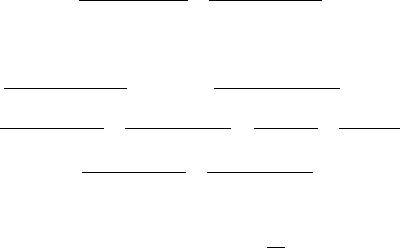
136 |
|
|
CHAPTER 3. |
DIFFERENTIATION |
We may express this in the form |
|
|
|
|
|
(y − y0)(y0 − k) |
+ |
(x − x0)(x0 − h) |
= 0. |
|
b2 |
a2 |
||
|
|
|
||
By rearranging some terms, we can simplify the equation in the following traditional form:
|
(y − k) + (k − y0) |
· |
(y |
0 − |
k) + |
(x − h) + (h − x0) |
(x |
0 |
− |
h) = 0 |
|||||||||
|
b2 |
|
|
|
|
||||||||||||||
|
|
|
|
|
|
|
a2 |
|
|
|
|
|
|||||||
(y − k)(y0 − k) |
+ |
(x − h)(x0 − h) |
= |
(x0 − h)2 |
+ |
(y0 − k)2 |
= 1. |
||||||||||||
|
b2 |
|
|
a2 |
a2 |
|
|
|
b2 |
|
|
||||||||
|
|
(y − k)(y0 − k) |
+ |
(x − h)(x0 − h) |
= 1 |
. |
|
|
|
|
|||||||||
|
|
|
|
b2 |
|
|
|
|
|
|
|
a2 |
|
|
|
|
|
|
|
Exercises 3.4 In each of the following, find dxdy by implicit di erentiation.
1. |
y2 + 3xy + 2x2 = 16 |
2. x3/4 + y3/4 = 103/4 |
|||||||||
3. |
x5 + 4x3y2 + 3y4 = 8 |
4. |
sin(x − y) = x2y cos x |
||||||||
|
x2 |
y2 |
|
|
x2 |
y2 |
|||||
5. |
|
|
− |
|
= 1 |
6. |
|
|
+ |
|
= 1 |
|
4 |
9 |
16 |
9 |
|||||||
Find the equation of the line tangent to the graph of the given equation at the given point.
7. |
9 |
+ y4 |
= 1 at 2, |
2 3 |
|
! |
|
|
||||||||
5 |
|
|
||||||||||||||
|
|
x2 |
2 |
|
|
|
|
√ |
|
|
||||||
|
|
|
x2 |
|
|
y2 |
3 |
|
|
|
|
|
|
|
||
|
|
|
|
|
|
|
|
|
|
|
|
|||||
8. |
|
|
− |
|
= 1 at |
|
|
√5, 1 |
||||||||
9 |
4 |
2 |
||||||||||||||
9. |
x2y2 = (y + 1)2(9 − y2) at |
2 √5, 2 |
||||||||||||||
10. |
|
|
y2 = x3(4 − x) at (2, 4) |
3 |
|
|||||||||||
|
|
|
|
|||||||||||||
